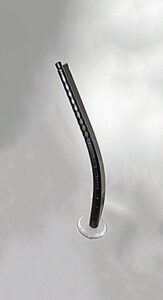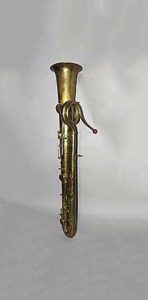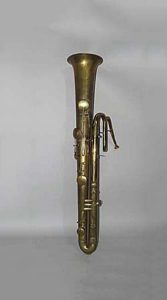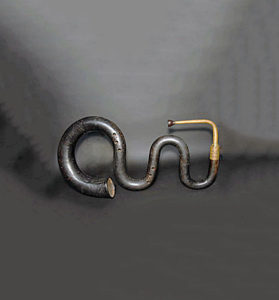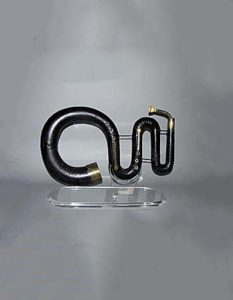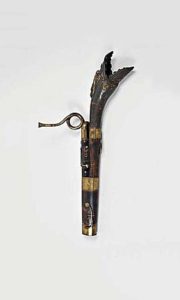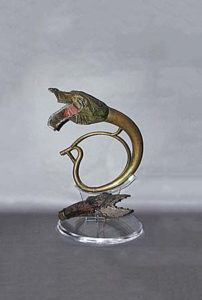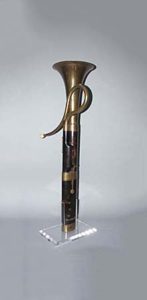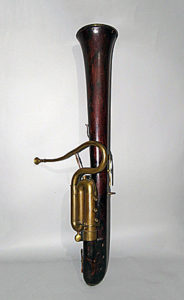Cornetti / Serpents / Ophicleides
The cornetto, or zink has no descendants among today’s instruments: Its name is derived from ‘corno,’ the horn or ivory from which instruments like the oliphant were made earlier in the Middle Ages. Renaissance and Baroque cornetti were sometimes made of ivory, but most typically of wood with a glued cover of blackened leather, finger holes and a horn, ivory, wood, or bone mouthpiece.
The serpent is a wind instrument, descended from the cornetto, and a distant ancestor of the tuba. It is played by buzzing the lips into a cup-shaped mouthpiece, like a brass instrument. The earliest serpents consisted of a long cone bent into a snakelike shape with six finger holes like a woodwind instrument. Unlike the cornett/cornetto, it does not have a thumb hole. It is generally made out of wood, with the outside covered with dark brown or black leather. Despite wooden construction and the fact that it has finger holes rather than valves, it is classified as a brasswind instrument, due to the nature of the embouchure used to play it. The pitch range of the serpent varies according to the instrument and the player, but usually covers from around two octaves below middle C to at least half an octave above middle C, sometimes higher. Depending upon the placement of the finger holes, the snake-like shaped serpents were held both vertical or horizontal.
The origin of the serpent is claimed to be invented by a clergyman named Edmé Guillaume in 1590 in Suxerre, France. It was believed to be used to strengthen the sound of the low pitches in plainchant. Nevertheless, according to Jean Lebeuf’s “Mémoires Concernant l’Histoire Ecclésiastique et Civile d’Auxerre” the appearance of the serpent was not until 1743. Another claim is by Herbert Heyde, who asserts the serpent evolved from a type of bass cornett and was instead invented in Italy sometime in the 16th century.
The ophicleide is a keyed brass bass instrument with a conical-bore. It was invented in 1817 and patented in 1821 by French instrument maker Jean Hilaire Asté (also known as Halary or Haleri) as an extension to the keyed bugle, or Royal Kent bugle, family. It was the structural cornerstone of the brass section of the Romantic orchestra, replacing the Renaissance/Baroque serpent.

